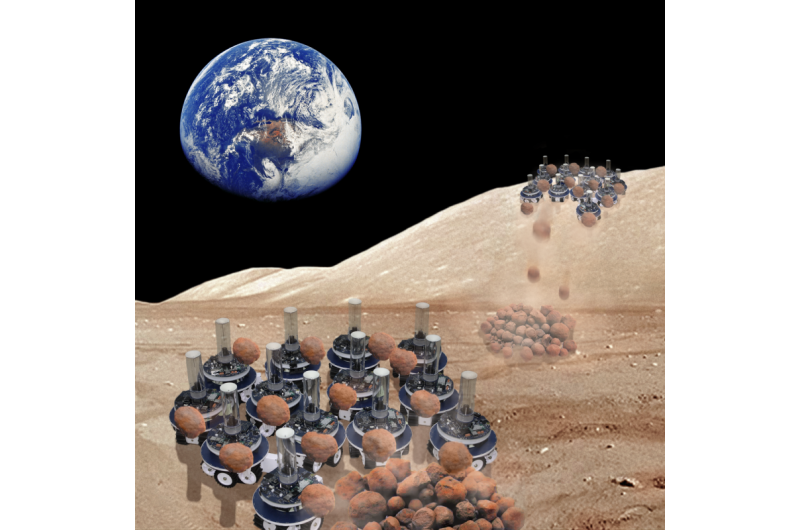Artificially Evolved Robots that Efficiently Self-Organize Tasks Credit: Ferrante et al.
Darwinian selection can be used to evolve robot controllers able to efficiently self-organize their tasks. Taking inspiration from the way in which ants organise their work and divide up tasks, Eliseo Ferrante and colleagues evolved complex robot behaviors using artificial evolution and detailed robotics simulations.
Just like social insects such as ants, bees or termites teams of robots display a self-organized division of labor in which the different robots automatically specialized into carrying out different subtasks in the group, says new research publishing in PLOS Computational Biology.
The field of 'swarm robotics' aims to use teams of small robots to explore complex environments, such as the moon or foreign planets. However, designing controllers that allow the robots to effectively organize themselves is no easy task.
The novel method developed by the team of scientists from the University of Leuven, the Free University of Brussels and the Middle East Technical University is based on grammatical evolution and Allows the evolution of behaviours that go beyond the complexity achieved before this study.
More information: Ferrante E, Turgut AE, Duéñez-Guzmán E, Dorigo M, Wenseleers T (2015) Evolution of Self-Organized Task Specialization in Robot Swarms. PLoS Comput Biol 11(8): e1004273.DOI: 10.1371/journal.pcbi.1004273
Journal information: PLoS Computational Biology
Provided by Public Library of Science























